Murder of the Imperial Family - Murder of the Romanovs in Alapayevsk
Quoted from "Elizabeth and Alexandra"
by Anthony Lambton
E.P. Dutton - New York 1985
pages 402-409
Appendix 6: Chapter 26 of the Sokolov Report
The murder at Alapayevsk of the Grand Duchess Elizabeth Feodorovna, the Grand Duke Serge Mikhailovich, and the Princes loann Konstantinovich, Konstantin Konstantinovich, Igor Konstantinovich, and Prince Vladimir Pavlovich Palei.
In the summer of 1918, in the town of Alapayevsk, Verkhoturskii Uezd, Perm Guberniya, not far from Ekaterinburg, the Grand Duchess Elizabeth Feodorovna, the Grand Duke Serge Mikhailovich, and the Princes loann Konstantinovich, Konstantin Konstantinovich, Igor Konstantinovich, and Prince Vladimir Pavlovich Palei were being held prisoners.
During the early hours of 18 July 1918, they all disappeared from Alapayevsk, and in the morning the Bolsheviks pasted up notices throughout the town that they had been stolen away by the 'white Guard'.
The populace did not believe these notices, but, under the weight of terror, did not dare to take action.
On 28 September, Alapayevsk was liberated from the Bolsheviks.
The military authorites appointed Officer Malshikov to undertake police investigations.
The court investigation started on 11 October, in the hands of Member of the Court Sergeyev.
On 7 February 1919 it was transferred to me [Sokolov] together with the case of the murder of the imperial family.
This is what the investigations determined:
The prisoners arrived in Alapayevsk on 20 May 1918, and were accommodated in the so-called 'Napolnaya school' on the edge of the town. This is a stone building consisting of four large and two small rooms with a system of corridors.
The corner room to the left of the corridor was occupied by the guard. Further along the same side of the corridor were three rooms. In the first lived Serge Mikhailovich and Vladimir Pavlovich Palei with their servants Feodor Semyonovich Remez and Krukovskii. In the next room lived Konstantin Konstantinovich and Igor Konstantinovich. the corner room was occupied by Elizabeth Feodorovna and two sisters of the Order of Martha and Maria who were in her service: Varvara Yakovleva and Ekaterina Yanysheva. In the corner room on the right side of the corridor lived loann Konstantinovich, in the next, the footman Kalin, and the next room was the kitchen.
Gelmersen, the doctor of Serge Mikhailovich, arrived later, and moved into the school.
No one commissar was appointed to oversee the prisoners. Authority over them was manifested by many Bolsheviks who had served with distinction at Alapayevsk These were:
1. Grigorii Pavlov Abramov (chairman of the Sovdep)
2. Ivan Pavlov Abramov
3. Mikhail Ivanov Gasnikov
4. Mikhail Leontev Zayakin
(Members of the Sovdep)
5. Dmitrii Vasiliev Perminov (secretary of the Sovdep)
6. Nikolai Pavlov Govyrin (chairman of the Cheka)
7. Pyotr Konstantinov Startsev
8. Pyotr Aleksandrov Zyryanov
9. Mikhail Feodorov Ostanin
(Members of the Cheka)
10. Vasilii Petrov Postnikov (a judge)
11. Ivan Feodorov Kuchnikov (leader of a Red Army brigade)
12. Efim Andreev Solovyov (judiciary commissar)
13. Vladimir Afanasev Spiridonov (administrative commissar)
14. Serge Alekseev Pavlov (military commissar)
15. Aleksei Aleksandrov Smolnikov
16. Egor Ivanov Sychev (Bolshevik worker)
17. Vasilii Pavlov Govyrin
18. Evgenii Ivanov Naumov
19. Dmitrii Petrov Smirnov
20. Ivan Dmitriev Maslov
21. Vasilii Pyabov
22. Mikhail Nasonov
(Bolshevik workers)
All these were Russian people, residents of Alapayevsk and its environs.
The guard always consisted of six people: Magyars, Red Army men, local workers appointed by the Sovdep or Cheka.
One Krivovna, serving the prisoners as non-resident cook, her assistant PozdinaZamyatina and the worker-watchman Startsev <<l>> testified that:
KRIVOVNA: 'The rooms of the Princes had only the simplest bare essentials: plain iron beds with stiff matresses, a number of plain tables and chairs. There were no soft furnishings. Towards I p.m. I would prepare breakfast, at four tea was served and at seven - dinner . . . The Princes occupied themselves by reading, went for walks, worked in the kitchen garden adjoining the school. With the permission of the Red Army duty guard, the Princes would go to church and for walks in the fields which start behind the school. These walks were without guards. The Grand Duchess Elizabeth Feodorovna occupied herself by drawing and spent long periods in prayer; her breakfast and dinner were taken to her in her room. The other Princes would gather for breakfast and dinner in the room of Serge Mikhailovich, which also served as the communal dining room.'
POZDINA-ZAMYATINA: 'In the month of May, when I was serving the Princes, they had freedom enough: they could wander without hindrance in the meadow by the school, they worked in the kitchen garden and went to church. All the Princes and the Grand Duchess worked in the kitchen garden, with their own hands digging vegetable and flower beds. They also cleaned and tidied up the courtyard, creating a clean and cosy place where the Princes frequently drank tea in the open air, read and chatted.'
STARTSEV: 'Occasionally the Princes would walk in the corridor. With one of them, already turning grey (I do not know his name) we would have long conversations. The Prince would demonstrate that universal equality was an impossibility, quoting the 'parable of the talents'. Concerning land redistribution, the Prince would say that land also varied, and therefore it was difficult to divide it equally and fairly among all the working people. The prince would complain of rheumatism in the legs and say that only massage eased the pain . . . The conversations were of a pleasant peaceful nature, so that the Prince expressed his satisfaction and stated that he was only able to converse occasionally, as the guard were for the most part hooligans.'
How did they relate to the prisoners?
Krivovna test)fied that: 'The Red Army men, guarding the house, were a mixed bunch. The good ones were sorry for the Princes and were attentive to them, but the bad were coarse and argumentative and even addressed the Princes as 'comrade'. On some three occasions the Austrians were on duty. These Red Army men were the very coarsest, and at night almost every hour they burst into the rooms of the Princes and carried out searches. The Grand Duke Serge Mikhailovich protested against these pointless disturbances, but no notice was taken of his complaint. I pass this on from the words of the Grand Duke himself.'
On 21 June, the life of the prisoners suddenly deteriorated: a prison regime was implemented, and their belongings and money were taken from them.
Krivovna testified that: 'Over about a month the situation of the Princes rapidly deteriorated: All their property was confiscated: shoes, linen, clothes, pillows, gold articles and money; they were left only their underclothes, shoes, and two changes of linen. From the same time all walks beyond the school fence were prohibited, and they were prohibited from making any purchases at the market. To feed the Princes it was decided to send in prepared food from the soviet, but later I was permitted to cook for the Princes from my own store; I guess 28 pounds of meat, 15 pounds of millet and one bottle of hempseed oil per week.'
There is no shadow of doubt that the change took place on orders from Ekaterinburg.
On 21 June, the Grand Duke Serge Mikhailovich telegraphed:
Ekaterinburg. To the President of the Oblast Soviet. On the orders of the Oblast Sovdep we are from today under prison regime. For four weeks we have lived under the surveillance of the Alapayevsk Sovdep, and have not left the school and its courtyard except to attend church. Not knowing any fault in ourselves we petition for the lifting of the prison regime. On behalf of myself and my relations in Alapayevsk, Serge Mikhailovich Romanov.
Judiciary commissar Solovyov inquired the same day by telegraph:
Military [telegram]. [To] Ekaterinburg Oblast Soviet Should the household [servants] of the Romanovs be considered as arrested [?][Should we] allow them to leave [for any] reason[?] 4227 Alapayevsk Sovdep Sender E. Solovyov'<<2>>.
What brought about the change in the regime?
In the Summer of 1918 the Grand Duke Mikhail Aleksandrovich was in exile in Perm.
During the month of June he disappeared.
This was the motive of [the] Ekaterinburg [authorities] for the introduction of the prison regime at Alapayevsk
In reply to the telegram of Solovyov, Beloborodov telegraphed to him on 22 June:
[To] Alapayevsk
Sovdep
Your discretion [concerning] the household [servants] Nobody to leave withoutpermission of Dzerzhinskii [in] Moscow Uritskii [in] Petrograd Ekaterinburg Oblasoviet stop Inform Serge Romanov that imprisonment is precautionarymeasure against flight in view of disappearance of Mikhail [from] Perm - Beloborodov <<3>>
The transmission copy of this telegram appears in photograph No. 134.
All who were not relatives were separated from the prisoners. Only Sister Yakovleva was left with Elizabeth Feodorovna and Remez with Serge Mikhailovich.
On 17 July at twelve o'clock [midday] chekist Pyotr Startsev arrived at the school with several Bolshevik workers. They took from the prisoners their last remaining money, and told them that they would be transferred that night to the VerkhneSinyachikhenskii works, roughly 15 versts [16 km] from Alapayevsk.
The new arrivals sent the Red Army men away from the school and took over from them. At this time Krivovna was preparing dinner. She test)fied: 'The Bolsheviks hustled me over the dinner; I served dinner at six o'clock, and during dinner the Bolsheviks kept hustling: "Finish your dinner quickly. At eleven o'clock we are going to Sinyachikha." I started to pack some groceries, but the Bolsheviks told me to wait, that I could bring them tomorrow to Sinyachikha.'
Late that night grenade explosions and gunshots were heard near the school building. This caused consternation in the town. Many saw Red Army men deployed in line some distance from the school, who were later led right up to the school itself.
The nature of the hoax was even then clear, not only to many townspeople, but also to the very Red Army men in the line.
Four of them were held <<4>>. I will limit myself to the testimony of Yakim Nasonov:
'About three in the morning of 18th July the alarm was raised in our barracks: the White Guard were attacking. We rapidly gathered, dressed and armed. We were led to the Napolnaya school, in the vicinity of which we were deployed in line. We were led to the Napolnaya school in the vicinity of which we were deployed in line. We remained in the line about half an hour, and then moved up to the school itself. We saw no enemy of any kind and did not fire a shot. Commissar Smolnikov stood on the porch of the school, swore and said to us: "Comrades we'll catch it now from the ural Oblast Soviet because the Princes have managed to escape. The White Guard have taken them off in an aeroplane."
'Peoples Court Judge Postnikov was also present, with "a big book in his hand", and conducted an investigation into the flight of the Princes. About three to four days later people were beginning to say that the commissars were deceiving the people with their story of the abduction of the Princes, and that the Princes had actually been murdered by them.'
On 18 July at 3.15 in the morning, the Alapayevsk Sovdep telegraphed to the Ekaterinburg Oblast Sovdep <<5>>
Military [telegram]. [To] Ekaterinburg. Ural administration. On the morning of 18 July at 2 o'clock a band of unknown persons under arms assaulted the Napolnaya school where the Grand Dukes were accommodated. During the gun battle one bandit was killed and apparently there are wounded. The princes and household [servants] succeeded in escaping in an unknown direction. When [the] Red Army detachment arrived the bandits fled in the direction of the forest. None were captured. Search continues. Alapayevsk ispolkom. Abramov. Perminov. Ostanin.
On the same day at 18.30 [6.30 pm] Beloborodov telegraphed:
Collective [telegram]
Moscow two addresses [to] Sovnarkom [to] President Tsik Sverdlov
Petrograd two addresses [to] Zinoviev [to] Uritskii Alapayevk Ispolkom has informed [us] of the assault on the morning of 1 8th by an unknown band on the premises where the once Grand Dukes Igor Konstantinovich Konstantin Konstantinovich Ivan Konstantinovich Serge Mikhailovich and Polei [sic1 were being held under guard stop notwithstanding resistance the Princes were abducted stop there are casualties on both sides search in progress stop 4853.
Predoblasoviet [president of Oblast Soviet]
Beloborodov <<6>>
This telegram appears in photograph No. 135.
On 25 July 1918, just such an announcement by Beloborodov was placed in edition 144 of the Perm Izvestiya:
The Abduction of the Princes
The Alapayevsk executive committee informs us from Ekaterinburg of the assault during the morning of 18 July by an unknown force on the premises where the once Grand Dukes Igor Konstantinovich, Konstantin Konstantinovich, Ivan Konstantinovich, Serge Mikhailovich, and Palei were being held under guard.
In spite of the resistance of the guard, the Princes were abducted. There were casualties on both sides. A search is being carried out.
Chairman, Oblast Soviet Beloborodov - <<7>>
The first clue was given by Krivova: they were preparing to take them to Verkhne-Sinyachikha.
Another incident also helped.
Not long before the abduction of the Noble Prisoners, an Alapayevsk peasant Ivan Solonin was preparing to get married. He ordered of [another] peasant Aleksandr Samsonov some kumyshka (samogon) [illicit spirit] for the wedding. Samsonov accepted the order and went into the forest with the necessary supplies to prepare the kumyshka.
However the wedding fell through, and the mother of the bride, the disappointed mother-in-law, to avoid paying Samsonov for his work, went to the Cheka and denounced him for preparing illicit spirit.
Samsonov's friends, having heard of this, searched him out in the forest and warned him of the danger that threatened.
Samsonov stopped working and returned to Alapayevsk by a round-about route.
He rewarded his benefactors with a quarter of the kumyshka he had made, and they drank it there and then.
Late that night they set off for Alapayevsk. They travelled the road leading from Alapayevsk to Sinyachikha, and met a column of 10-1 I wagons, with two people in each, without coachmen in the boxes. They all speak of the meeting with a single voice.
Here is the testimony of Trushkov <<8>>: 'The whole column was coming from Alapayevsk towards Sinyachikha and I came across it about the fifth versta [5.3 km] from Alapayvsk. There were no cries, no conversation, no songs, no groans; absolutely no sound I could hear. They all proceeded quietly and calmly.'
The Sinyachikhenskaya road rivetted the attention of Malshikov. He studied it and came to the conclusion that the solution to the mystery should be sought in the mine situated close to that road.
He soon noticed that one of the old shafts of the mine was scattered on the surface with fresh earth. He carried out excavations.
The shaft was 28 arshins [19.9m] deep. Its walls were clad with planks. Inside were two sections: the working shaft, through which ore was removed, and the machine shaft, where the pumps stood for the removal of water. Both sections were cluttered with a large quantity of old planks, Iying completely at random.
At various depths in the shaft Malshikov found bodies: 8 October Feodor Semyonovich Remez, 9 [October] Varvara Yakovleva and Prince Palei, 10 [October] the Princes Konstantin Konstantinovich, Igor Konstantinovich and the Grand Duke Serge Mikhailovich, 11 [October] the Grand Duchess Elizabeth Feodorovna and Prince loann Konstantinovich.
The bodies were clothed. In their pockets were found various household articles and their papers, which they always carried with them during their imprisonment.
On the breast of the Grand Duchess Elizabeth Feodorovna was an icon of the Saviour with precious stones. To my knowledge, the Emperor prayed before this icon before his abdication, and gave it afterwards to Elizabeth Feodorovna. On the reverse is the inscription 'Palm [Sunday] 13th April 1891'.
In photograph No. 59 it is on the left of the top row.
The shaft had without doubt been blown up with grenades.
The bodies were displayed to the public and were recognized.
Here are the results of the autopsies <<9>>:
The body of the Grand Duchess Elizabeth Feodorovna: In the cranial cavity, on dissection of the skin, bruises were exposed; in the forehead area [a bruise] the size of a child's palm, and in the region of the left parietal bone [a bruise] the size of an adult's palm. There are bruises in the cellular tissue, the muscles and on the surface of the cranium. The skull bones are intact. A bruise is visible in the aura mater of the parietal area.'
The body of the Grand Duke Serge Mikhailovich: 'On dissection of the cranial skin in the left parietal area [there is] a bruise in the muscle and cellular tissue; in the right parietal bone there is a round hole the size of the groshina (1/2 centimetre in diameter); the channel of this wound runs downwards and backwards. On removal of the cranium, on the inner surface of the right parietal bone there is a hole I centimetre in diameter corresponding with the first; around the hole are splinters of bone. In the aura mater there is a disruption of the fabric in the form of a [not quite] round hole corresponding with the holes in the skull bone.'
The body of the Prince loann Konstantinovich: 'In the region of the right temple, on dissection of the skin, a bruise is visible in the muscle and cellular tissue, which occupies the whole region of the temple. On removal of the cranium a bruise was exposed in the aura mater in the same right temple region. There is a bruise within the thickness of the muscle over the whole of the frontal chest wall. In the cavities of the pleura is an extensive haemorrhage. In the abdominal region, on dissection of the skin, a bruise is visible in the thickness of the muscle and fatty tissue, which has spread over the whole frontal wall of the stomach.
The body of the Prince Konstantin Konstantinovich: 'On the parietal is a large torn wound in the skin running from right to left, with a length of 9 centimetres and a width of 3 centimetres. Two centimetres behind this is a second torn wound 2 centimetres long. On the right temple and parietal (bones) and on the parietal itself is an extensive bruise the size of a palm. On removal of the cranium a bruise was discovered on the aura mater, the parietal and the occiput. In the thoracic cavity, on dissection of the skin, a large bruise was found which has penetrated the muscle and cellular tissue of the front wall of the thorax.
The body ot Prince Igor Konsantinovich: 'In the cranial cavity, on dissection of the skin, a bruise [was found] occupying the whole right hand half of the forehead; [There is] a crack in the bones of the skull starting in the centre of the upper edge of the right orbit and running along the centre line of the frontal bone. The crack runs rearwards into the (posterior fontanelle) and on to the occiput. On dissection of the cranium, the brain [was found to be] a grey mass. On removal of the brain, [a] crack was seen running over the upper wall of the right orbit to cross the (internal occipital protruberance). In the thoracic cavity, on dissection of the skin, a large bruise was found, which has penetrated the muscle in the lower part of the front wall of the thorax. On dissection of the abdominal cavity, a large bruise [was found] in the thickness of the abdominal wall.'
The body of Prince Vladimir Pavlovich Palei: 'In the cranial cavity, on dissection of the skin, [was found] a large bruise occupying both parietals and the occipital regions. On dissection of the skin about 4-5 cubic centimetres of blood ran out . . . On dissection of the cranial cavity a haemorrhage [was found] under the aura mater in the occipital region. The rearward parts of the brain are a gruel-like red mass. In the thoracic cavity [is] a large bruise in the thickness of the muscle and cellular tissue
The body of Fyodor Semyonovich Remez: 'In the region of the chest muscles [is] a severe bruise, which has spread over the whole thoracic cavity . . . [There is] a haemorrhage in the region of the right pleura. . . In the region of the right temple, on dissection of the skin, a large haemorrhage [was found]. A bruise has spread over the entire occipital region . . . Under the dura mater in the region of the lefi temple [there is] a haemorrhage.
The body of Varvara Yakovleva: 'On dissection of the skin of the head a bruise was found in the region of the right temple, and a second bruise in the occipital and parietal regions. The bones of the skull are intact. There is blood in the sutures. On removal of the cranium a bruise was found under the aura mater in the occipital region . On dissection of the skin a bruise [was foundl in the region of the sternum.
The bodies of the Grand Duke Serge Mikhailovich, the Grand Duchess Elizabeth Feodorovna, the Princes loann Konstantinovich, Konstantin Konstantinovich and Igor Konstantinovich are illustrated in photographs Nos. 136-140.
Experts have determined that the death of the Grand Duke Serge Mikhailovich was caused by 'a haemorrhage into the aura mater and disruption of the brain tissue as a result of a gunshot wound".
All the others were thrown alive into the shaft and their death was caused by 'haemorrhages as a result of their injuries'.
Judiciary commissar Efim Solovyov,chekist Pyotr Startsev and Sovdep member Ivan Abramov were captured<< 10>>.
Many other murders lay on the conscience of Solovyov. He murdered, by the way, the local priest Father Udintsev. A hardened criminal, Solovyov affirmed that he was absent from Alapayevsk on 17 and 18 July, which, however, was refuted by the investigation.
Startsev and Abramov saw everyone who took the prisoners to the shaft on the morning of 18 July and everyone who remained by the school and simulated the assault of the imaginary 'White Guard'.
Their names are given above.
In photograph No. 141 are shown:
Efim Solovyov ( I ), Grigorii Abramov (2), Nikolai Govyrin (3), Mikhail Ostanin (4), Aleksei Smolnikov (5), Sergei Pavlov (6), Dmitrii Perminov (7), Egor Sychev (8), Mikhail Nasonov (9), Vasilii Postnikov (10).
The imaginary 'bandit', whose body was found near the school after the removal of the prisoners, turned out to be a peasant from the Saldinsk works. He was seized beforehand by the Chekists and was for several days held at the Alapayevsk Cheka.
Startsev explained that the murder of the noble prisoners was on orders from Ekaterinburg, and that Safarov came from there specially to handle it << 11>>.
Is it possible to doubt this?
No more than one day [24 hours] separate the Ekaterinburg murders from those at Alapayevsk.
There they chose a disused mine to conceal the crime. The same method [was used] here.
There they tricked the imperial family from their quarters with a lie. They used the same method here.
Both the Ekaterinburg and the Alapayevsk murders were the product of the one will of the same people.
Please send your comments on this page and the Time Machine to boba@pallasweb.com
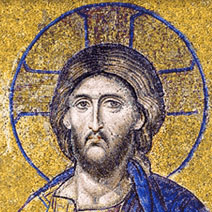




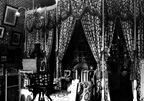 Imperial Bedroom
Imperial Bedroom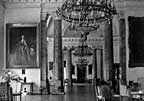 Portrait Hall
Portrait Hall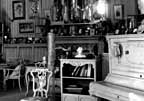 Mauve Room
Mauve Room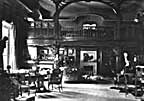 Maple Room
Maple Room Aleksey's Bedroom
Aleksey's Bedroom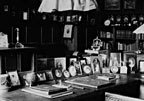 Nicholas's Study
Nicholas's Study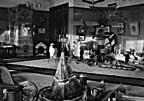 Aleksey's Playroom
Aleksey's Playroom Formal Reception
Formal Reception Balcony View
Balcony View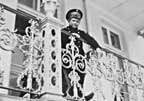 Aleksey- Balcony
Aleksey- Balcony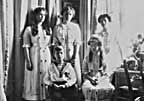 Children-Mauve
Children-Mauve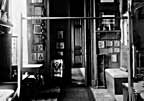 Nicholas's Bathroom
Nicholas's Bathroom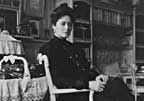 Alexandra- Mauve
Alexandra- Mauve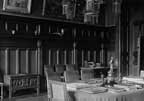 Nicholas's Reception
Nicholas's Reception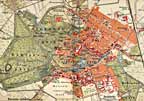 Tsarskoe Selo Map
Tsarskoe Selo Map